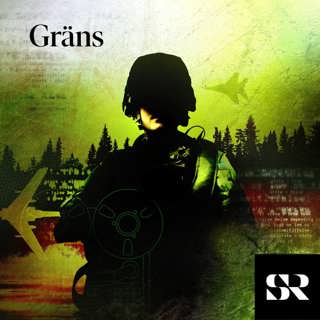
The Constitutional Clash on a Conference Call
On Tuesday, the Supreme Court debated the nature of presidential power in two sets of cases regarding demands for President Trump’s personal records: one about his taxes, the other about claims that during his campaign he paid to silence women with whom he previously had affairs. This is what a constitutional clash on a conference call sounded like. Guest: Adam Liptak, who covers the Supreme Court for The New York Times. For more information on today’s episode, visit nytimes.com/thedaily. Background reading: Based on the court’s questions, our reporter thinks the two sets of cases may well be decided in different ways. Here are the full arguments, if you want to listen in.Aimee Stephens, the transgender plaintiff in another Supreme Court case who we spoke with on the show in November, has died of complications related to kidney failure. She was 59. Subscribe today at nytimes.com/podcasts or on Apple Podcasts and Spotify. You can also subscribe via your favorite podcast app here https://www.nytimes.com/activate-access/audio?source=podcatcher. For more podcasts and narrated articles, download The New York Times app at nytimes.com/app.
13 Maj 202027min

Boris Johnson's Change of Heart
As Italy, France and Spain entered national lockdowns, Prime Minister Boris Johnson of Britain was still shaking hands with coronavirus patients in hospitals, and then joking about it on national television. Then he was hospitalized with the virus — and by the time he returned, both his attitude and his approach to the crisis were transformed. Today, we explore why the country that was most skeptical of the virus may be the slowest to reopen. Guest: Mark Landler, the London bureau chief of The New York Times. For more information on today’s episode, visit nytimes.com/thedaily. Background reading: Mr. Johnson announced a cautious plan for reopening over the weekend, including a new 14-day quarantine for foreign arrivals.While the British government frequently says it’s “guided by the science” in managing the crisis, the membership of its scientific advisory group, SAGE, has been a secret. Subscribe today at nytimes.com/podcasts or on Apple Podcasts and Spotify. You can also subscribe via your favorite podcast app here https://www.nytimes.com/activate-access/audio?source=podcatcher. For more podcasts and narrated articles, download The New York Times app at nytimes.com/app.
12 Maj 202026min

The Shooting of Ahmaud Arbery
Ahmaud Arbery would have turned 26 on Friday. Instead of celebrating, a crowd of protesters, protected by masks, demanded justice for his death in front of a courthouse in Georgia. So what do we know about the killing of Mr. Arbery by two armed white men? Guest: Richard Fausset, a correspondent based in Atlanta. For more information on today’s episode, visit nytimes.com/thedaily. Background reading: On Feb. 23, Mr. Arbery was jogging not far from his home on the outskirts of Brunswick, Ga. Then he was confronted by two white men in a pickup truck and fatally shot.After video footage of Mr. Arbery’s killing was leaked, two men were arrested and charged with murder. Widespread protests and 2.23 mile solidarity runs ensued, posted on social media with the hashtag #IRunWithMaud. Subscribe today at nytimes.com/podcasts or on Apple Podcasts and Spotify. You can also subscribe via your favorite podcast app here https://www.nytimes.com/activate-access/audio?source=podcatcher. For more podcasts and narrated articles, download The New York Times app at nytimes.com/app.
11 Maj 202024min

The Sunday Read: 'The Iceman in Winter'
He was Batman. He was Iceman. Until he wasn’t. So what happened to Val Kilmer?In this weird, dark time, Taffy Brodesser-Akner tells a story about how sometimes, in the end, everything is different but everything is good.This story was recorded by Audm. To hear more audio stories from publishers like The New York Times, download Audm for iPhone or Android. Subscribe today at nytimes.com/podcasts or on Apple Podcasts and Spotify. You can also subscribe via your favorite podcast app here https://www.nytimes.com/activate-access/audio?source=podcatcher. For more podcasts and narrated articles, download The New York Times app at nytimes.com/app.
10 Maj 202051min

'Rabbit Hole,' Episode 4: Headquarters
Note: This episode contains strong language. Today, we’re sharing Episode 4 of “Rabbit Hole,” a New York Times audio series with the tech columnist Kevin Roose. In this episode, our reporter interviews the woman running the world’s largest and most influential video empire: Susan Wojcicki, the chief executive of YouTube. "If you're tuning in to "Rabbit Hole" for the first time, start with the prologue. You can find more information about the podcast at nytimes.com/rabbithole. Subscribe today at nytimes.com/podcasts or on Apple Podcasts and Spotify. You can also subscribe via your favorite podcast app here https://www.nytimes.com/activate-access/audio?source=podcatcher. For more podcasts and narrated articles, download The New York Times app at nytimes.com/app.
9 Maj 202039min

A Bit of Relief: Rick Steves' Travel Dreams
Rick Steves is a travel evangelist, always in motion, traversing faraway places and inspiring others to do the same. So when the world shuts down, and Rick Steves can no longer travel, then who is Rick Steves?Sam Anderson, a writer for The Times Magazine, profiled the travel guru last year. Today, Sam asks Rick how he’s been expanding his horizons from home. Dreaming of travel, we learn, is nearly as sweet as the real thing. Subscribe today at nytimes.com/podcasts or on Apple Podcasts and Spotify. You can also subscribe via your favorite podcast app here https://www.nytimes.com/activate-access/audio?source=podcatcher. For more podcasts and narrated articles, download The New York Times app at nytimes.com/app.
8 Maj 202016min

The Arrival of the ‘Murder Hornet’
It came to the United States from Asia and first appeared in Washington State. The country was slow to recognize it. Deaths mounted as it circulated for weeks undetected. And now, if it’s not stopped, it could reshape populations and industries across the country. Today, we discuss the arrival of the Asian giant hornet. Guest: Mike Baker, a Pacific Northwest correspondent for The New York Times who spoke with Ted McFall, a beekeeper in Washington State. For more information on today’s episode, visit nytimes.com/thedaily. Background reading: The Asian giant hornet can kill humans with its stings. It also decapitates bees methodically. If the hornets spread across the United States and devastate bee populations, which we depend on for one out of every three bites of food we eat, our food supply could be threatened.Although the Asian giant hornet kills honeybees in their hives, some bees have developed a remarkable defense: cooking the hornets alive. Subscribe today at nytimes.com/podcasts or on Apple Podcasts and Spotify. You can also subscribe via your favorite podcast app here https://www.nytimes.com/activate-access/audio?source=podcatcher. For more podcasts and narrated articles, download The New York Times app at nytimes.com/app.
8 Maj 202027min

The Chinese Lab Theory
Everyone wants to know where the coronavirus came from. In the absence of a clear explanation, several theories are circulating — including one, pushed by the Trump administration, that the pandemic started because of malpractice in a lab in Wuhan, China. But is that a secret the Chinese government is keeping, or a mystery no one knows the answer to? Guest: Julian E. Barnes, who covers national security for The New York Times. For more information on today’s episode, visit nytimes.com/thedaily. Background reading: Leaders in the intelligence community have said there is no indication the virus is man-made, but have yet to reach a conclusion on its origins. While many scientists say the virus most likely made the leap from an animal to a human in southern China, Secretary of State Mike Pompeo and President Trump continue to link the outbreak to a government lab.Some national security analysts are worried that pressure from senior Trump administration officials could distort assessments about the origin of the coronavirus and be used as a weapon in an escalating battle with China. Subscribe today at nytimes.com/podcasts or on Apple Podcasts and Spotify. You can also subscribe via your favorite podcast app here https://www.nytimes.com/activate-access/audio?source=podcatcher. For more podcasts and narrated articles, download The New York Times app at nytimes.com/app.
7 Maj 202021min





















